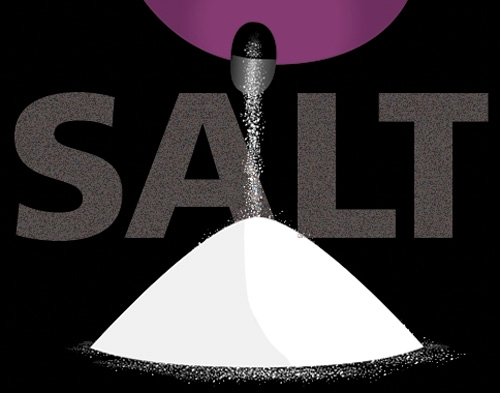Using spices, checking labels can limit dangers of sodium excess

When it comes to our dietary habits, we’re kind of like the little kid with his tongue stuck to the frozen metal pole: We know we shouldn’t do it, but we do.
Salt being a case in point. Anybody with an IQ above that of the average grapefruit knows that he or she shouldn’t consume too much salt. But do we listen? Not according to Joanna Gorman, a registered dietitian at University Medical Center.
"Unfortunately, they haven’t gotten the message," Gorman said. The Centers for Disease Control and Prevention has reported that 90 percent of Americans are still consuming more than government guidelines recommend, and one in three have blood pressure that’s higher than normal.
Ninety percent. And Gorman said that number has held steady for a while.
But why?
"Processed foods account for 80 percent of the intake," Gorman said. "It’s because of all of the fast food and the processed food. People are not taking the time to cook the food. So, unfortunately, it’s still a big problem."
An easy way to cut sodium intake is to simply avoid processed and fast foods, she said.
"Most important is to know what they’re ingesting," she added. Sodium content can be easily found on food labels, and the amount of sodium can vary greatly from brand to brand, or between flavors of soup, for example.
"Look at everything that has a label," she said. "Just because it’s turkey bacon, don’t assume that it’s low-sodium."
Sports drinks also can be a high source of sodium, especially if someone consumes several of them each day, she noted.
Another easy substitution: If you don’t have time to prepare fresh vegetables, choose frozen, which are much lower in sodium than canned.
"I always recommend frozen, because they’re picked and frozen at the height of the nutrition," she said.
If you are cooking, there are plenty of ways to add flavor without adding salt, and spice companies are making that easier all the time.
"You can begin with the spices you already have on your spice rack," said Nancy Macklin, test-kitchen dietitian for ACH Food Cos., which makes Spice Islands. Spices such as paprika, dill weed and minced garlic have only a trace of sodium – the amount that occurs in them naturally.
"That’s a place to start," Macklin said. "If you’re making mashed potatoes, grab the minced garlic out of your pantry, throw in a teaspoon or two and you have some nice garlic flavor and you haven’t added any salt."
Of course, use those spices judiciously, she said.
"Where people sometimes go wrong," Macklin said, "is if they’re grilling chicken breasts, they’ll grab the bottle of basil and just load it with basil. That’s not very appealing."
She also suggests combining spices, maybe mixing a little minced garlic, some dill, a little thyme and a dash of cayenne pepper. Experiment until you find a blend you like or find one of the "million recipes on the Internet," she said. Or you can turn to a commercial blend. Preparing products with less sodium is "certainly the politically correct thing," she said. "We all say, ‘I need to cut back on salt.’ A few years ago, it was sugar. Does that affect our buying patterns? That’s not always the case."
But low-sodium mixtures are out there. The company’s Cajun seasoning, Macklin said, has a small amount.
"If you just want to jazz up your chicken, or make a Cajun chicken sandwich, you don’t really have to put that much on and you’re adding minimal sodium," she said.
Although many of the blends are being made with less sodium, there still are plenty of minefields, and some of them are unexpected, she noted. When she was first out of school, Macklin said, she used to tell patients to use lemon pepper.
"I didn’t know the first ingredient was salt," she said. "And I’m a dietitian."
But Macklin said she thinks there’s more consciousness about consuming sodium than there was five or 10 years ago.
And in case you’re wondering, the recommended maximum sodium consumption for most people is 2,300 milligrams per day – 1,500 for people who are older than 50, and everybody with hypertension, diabetes or renal problems.
"It’s really a shame," Gorman said. "In this day and age, people are watching their bucks."
Products along the lines of Rice-a-Roni and Hamburger Helper can often be picked up at a bargain price, maybe even in dollar stores. Hamburger Helper, she said, contains 4,080 milligrams of sodium in the whole box, which is supposed to provide five servings.
"Most people tell me they get three," she said.
That’s 1,360 milligrams per serving, from that item alone.
Contact reporter Heidi Knapp Rinella at hrinella@review journal.com or 702-383-0474.